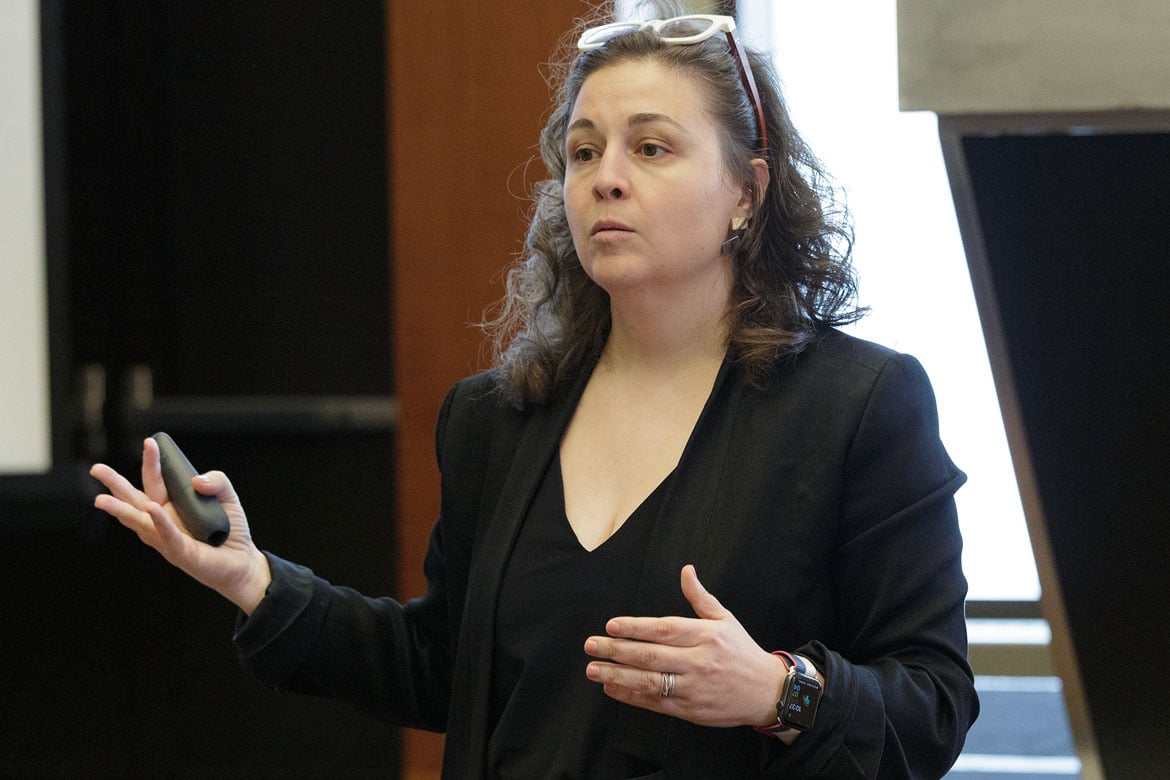The ability to articulate complex medical concepts with clarity, engage diverse audiences and maintain professionalism while discussing critical topics is crucial. Whether physicians are addressing a conference hall, conversing with reporters or engaging with the public through social media, a thoughtful approach to communication is paramount.
During a recent education session, experts shared some great tips to help physicians stay on message and effectively connect with diverse audiences about issues and policies that are important to doctors, their patients and their practices.
Use safe-harbor language
When faced with a challenging question, “sometimes you just need a moment to breathe,” said Melissa Harris, a former journalist and CEO of the Chicago-based marketing agency M. Harris & Co. “You’re going to get a question that you’re not quite prepared for or it came out of left field.”
When this happens, there are some “overarching AMA talking points that can be used as your opening sentence whenever you’re stuck with something rough. And they work in almost every situation.”
For example, physicians can say “my job is to be a powerful ally for patients” or that “my job is to improve the health of my patients and our community.”
“You’re taking it out of the world of prior authorization, finance, money, bureaucracy, and you’re saying … the reason I’m taking this position is that we’re just trying to be a powerful ally for our patients. This is also a key AMA message,” Harris said. “This is the safe-harbor language to give you a moment to breathe.”
Answers should put patients first
For Q&As, whether it is with a reporter, a patient or a colleague, “answers should be patient-centric. And pause before you answer. Comprehension occurs in the pauses,” said Harris. “If you do not give yourself a minute or give your listener a minute, you will start off in the wrong direction.”
Personalize answers and use analogies
“If you’re unsure where to start, lead with a topic sentence or value statement,” Harris said. “This is where you bring in that personal story, that personal experience.”
“Imagine your answer is a single paragraph. It’s about what gets heard and retained, not about what you want to say,” she said. Also, “avoid the medical terminology at all possible costs or when you use it, take a moment and be empathetic and explain it.”
“Having physicians come forward and tell their stories is incredibly powerful. No one can push back on your experience, so use it,” Harris emphasized, noting that when talking about complex topics, it is also helpful to use analogies because “it’s the most powerful form of communication after telling your own personal story.”
“Post about your own stories and experiences. … That’s the little bit of control you have all over this, so use it because that is your best bet,” said Jane Hirt, a consultant at M. Harris & Co. “If we all do that together and more and more people are posting that, we will make a difference,” Hirt said.
Avoid social media tit for tat
“Liking, sharing, commenting on a post only fuels it. It increases its importance and spreads it faster,” Hirt said. “Even if you post an angry emoji and you write the best comment ever … you are only helping the original post spread further.”
“So, I want you to resist the urge to ever actually post an angry emoji,” she said. “But let’s say you do decide to comment … speak to the broader audience who’s reading that post rather than one person.”
And “comment just once. Don’t get drawn into an argument. … Comment and then exit. Don’t go back and read what people said about it.”
Delete or turn off comments
“You might post on something you think is the most positive, normal, neutral thing ever and things get out of hand,” Hirt said. “Delete any misinformation, mean comments, disrespect, fights going on” in the comments to your social media posts.
“You don’t have to provide the platform for some misinformation guru or someone you know sitting in their basement somewhere to use your post for that,” she said.
The CME module, “A-23: Training Physicians in the Art of the Public Forum,” is enduring material and designated by the AMA for a maximum of 1.5 AMA PRA Category 1 Credit™.
The module is part of the AMA Ed Hub™, an online learning platform that brings together high-quality CME, maintenance of certification, and educational content from trusted sources, all in one place—with activities relevant to you, automated credit tracking, and reporting for some states and specialty boards.
Learn more about AMA CME accreditation.




